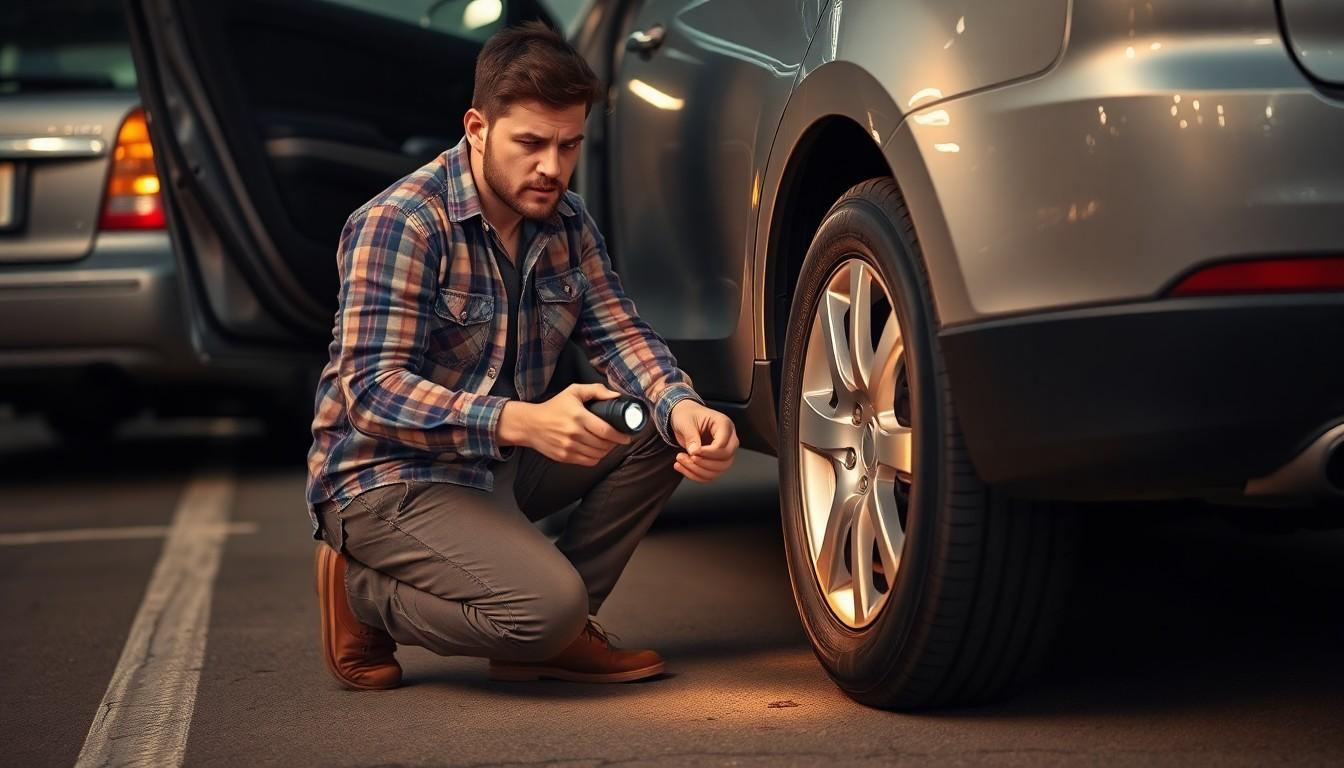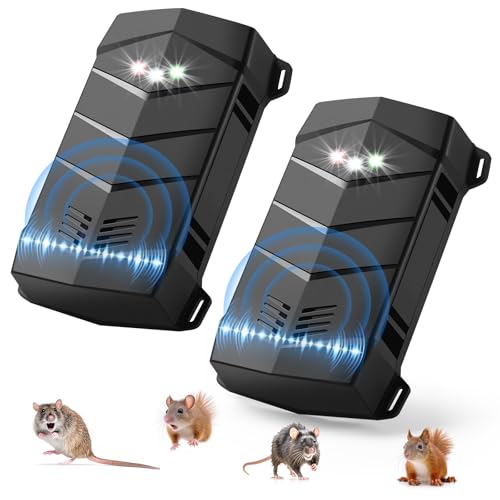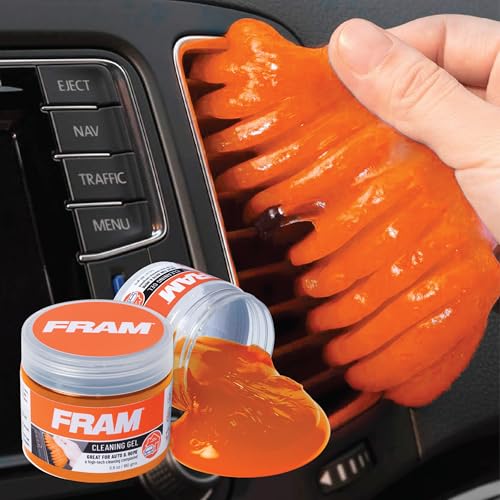Discovering a mouse in your car can be both surprising and frustrating. These tiny intruders can cause important damage by chewing through wiring, leaving droppings, and creating unpleasant odors. Whether you’ve spotted the telltale signs or actually seen the critter scurrying across your dashboard, it’s important to address the problem quickly.
We’ve helped countless vehicle owners reclaim their cars from these unwanted passengers. In this comprehensive guide, we’ll walk you through effective, step-by-step methods to remove mice from your vehicle and prevent future infestations. From humane trapping techniques to natural deterrents, we’ve got proven answers that work without damaging your car’s interior or electrical systems.
Signs of a Mouse Infestation in Your Car
Detecting a mouse problem in your vehicle early can save you from expensive repairs and health hazards. Mice leave behind exact indicators that help identify their presence, even if you haven’t spotted the actual rodent scurrying around your car.
Common Evidence of Mouse Activity
Mouse droppings resemble small, dark rice grains and typically appear in hidden areas of your car. Strange odors, particularly ammonia-like smells from urine or the musty scent of nesting materials, often indicate rodent presence. Shredded materials such as paper, fabric, or insulation found under seats or in the glove compartment point to mice gathering nesting materials. Tiny footprints or tail marks may be visible in dusty areas of your vehicle. Nocturnal scratching or scurrying sounds coming from your dashboard, vents, or under the hood suggest active mice in your car. Food crumbs or wrappers dragged to unexpected places like under floor mats or behind panels serve as additional evidence of mouse activity.
Potential Damage Caused by Mice
Electrical system damage ranks among the most serious problems mice create, as they chew through wiring harnesses and insulation, causing short circuits, warning lights, or complete electrical failures. Upholstery destruction occurs when mice tear seat fabric, headliners, and carpeting for nesting materials, resulting in costly repairs. HVAC system complications arise when rodents build nests in vents or blower motors, reducing airflow and creating unpleasant odors. Engine component damage happens when mice chew through hoses, belts, and plastic parts under the hood, potentially causing overheating or fluid leaks. Air filter contamination from droppings or urine compromises your engine’s efficiency and your air quality. Health hazards emerge from mouse droppings and urine that carry diseases like hantavirus, creating risks for anyone using the vehicle. Insulation deterioration occurs when mice tear out sound dampening materials, increasing road noise and reducing comfort.
Why Mice Are Attracted to Cars
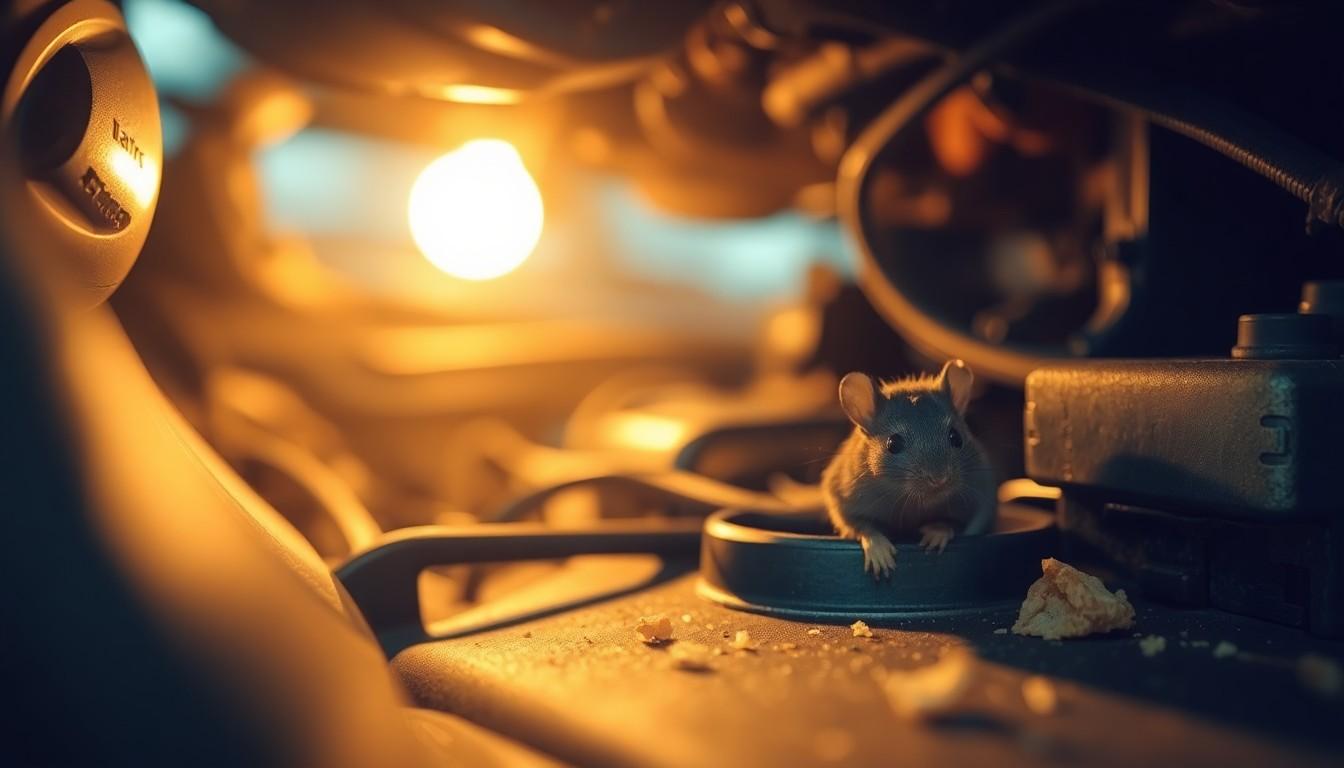
Understanding why mice are attracted to cars helps target the root causes of infestations. These small rodents seek certain environments and resources that vehicles often provide, making cars particularly vulnerable to mouse problems.
Warmth and Shelter
Vehicles offer mice ideal shelter with many protected spaces. The engine compartment retains heat long after the car has been turned off, creating a cozy environment that’s especially attractive during colder months. Mice easily access areas under the dashboard, behind glove compartments, and within trunk spaces where they’re safe from predators and harsh weather conditions. Cars left unused for extended periods become particularly susceptible to infestations as they provide undisturbed nesting sites. These rodents can squeeze through openings as small as a dime, making virtually any vehicle accessible through tiny gaps around cables, pedal shafts, or ventilation systems.
Food Sources in Vehicles
Cars frequently contain food remnants that attract hungry mice. Crumbs from snacks, dropped french fries, or forgotten food wrappers provide sustenance for these opportunistic feeders. Child car seats often accumulate important food debris, creating a virtual buffet for mice seeking nourishment. Pet food accidentally spilled during transport represents another common attractant in vehicles. Even non-food items such as napkins, paper, and certain types of car insulation materials become potential nesting materials or food sources. Mice don’t require much sustenance, so even minimal food residue can support their presence in your vehicle for extended periods.
Humane Methods to Remove Mice from Your Car
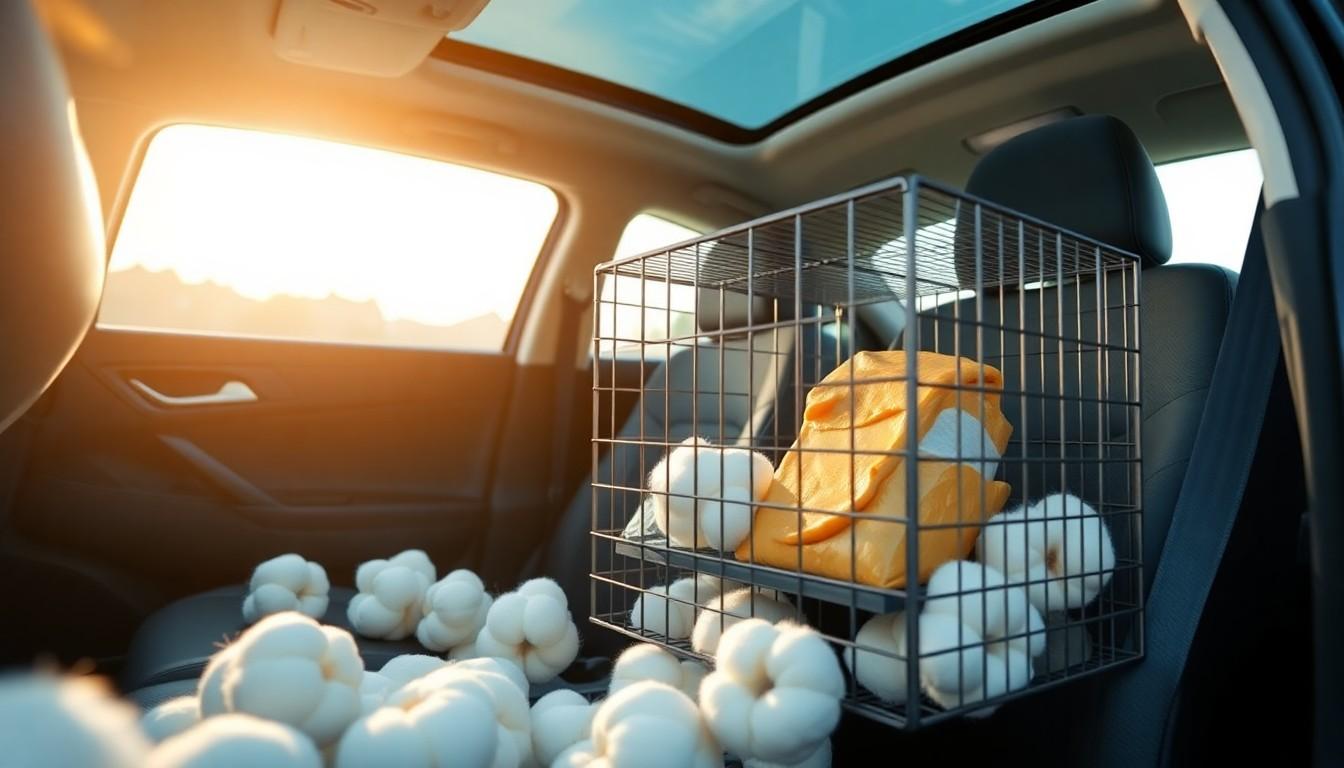
Getting rid of mice in your car doesn’t require harmful methods. These humane approaches effectively remove rodents while keeping them safe and preventing future infestations.
Live Traps and Relocation
Live traps offer a compassionate solution for capturing mice without causing harm. Place these traps in areas with noticeable mouse activity such as behind seats, under dashboards, or in the trunk. Baiting the traps with peanut butter or seeds significantly increases your chances of successfully catching the unwanted visitor. After capturing the mouse, relocate it to a natural area at least 100 yards from your home and other buildings to prevent it from returning to your vehicle.
Natural Deterrent Options
Natural deterrents effectively repel mice without using harmful chemicals. Peppermint oil serves as a powerful mouse repellent—simply soak cotton balls in the oil and place them throughout your car, focusing on entry points and nesting areas. Clove oil and cayenne pepper work similarly, creating an environment mice find uncomfortable and uninviting. Commercial rodent repellent packs like Victor® Scent-Away can be strategically positioned near the engine’s air intake or other vulnerable areas.
Regular ventilation plays a crucial role in deterring mice—open your car doors and windows frequently to reduce the appeal of your vehicle as a cozy nesting spot. Electronic ultrasonic devices emit high-frequency sound waves that mice find irritating but are inaudible to humans, making them an excellent non-toxic option for ongoing prevention. Thoroughly cleaning your car’s interior removes food sources that attract mice, while sealing potential entry points around the engine compartment and steering column prevents future access.
Commercial Products for Mouse Removal
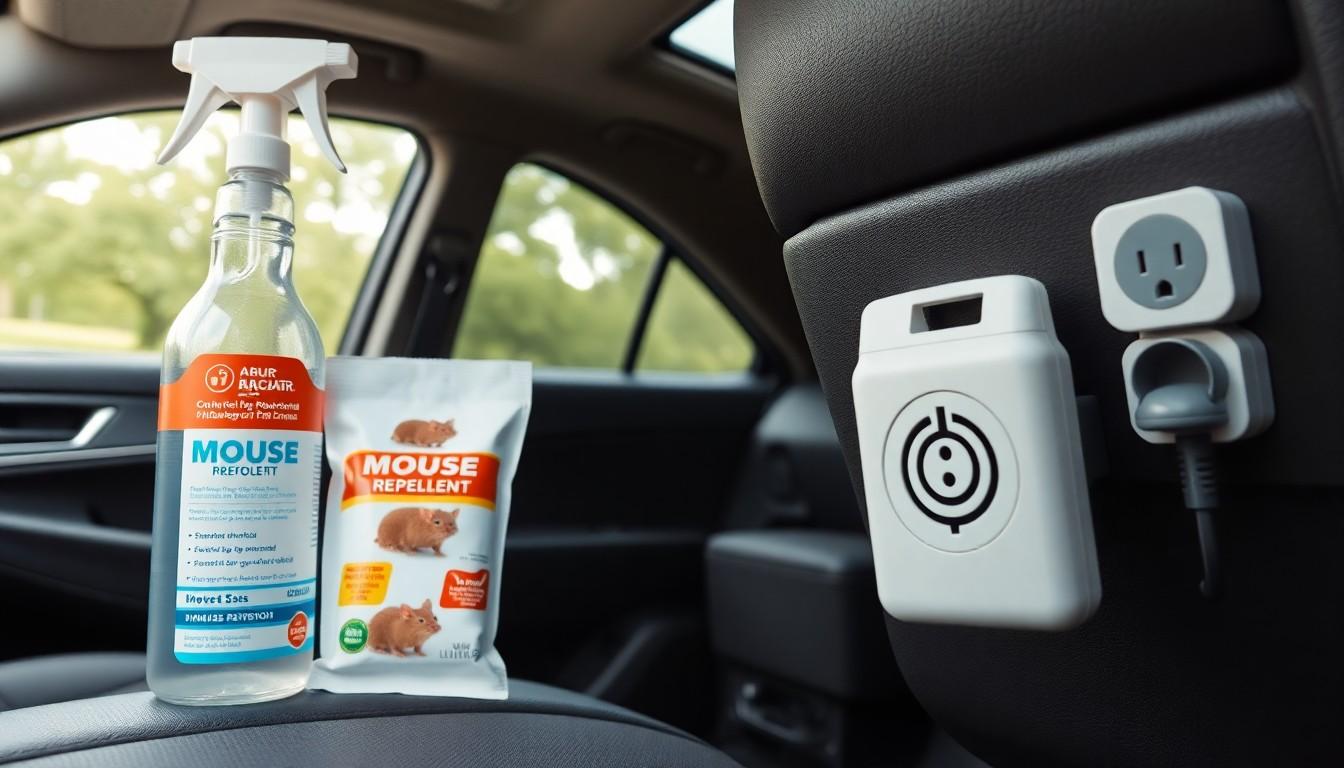
Commercial products offer effective answers for removing mice from your car. These specially designed products target rodent infestations while protecting your vehicle’s interior and electrical components.
Disinfectants and Cleaning Products
Disinfectants play a crucial role in eliminating diseases and odors left behind by mice. After removing any mice or nests, thoroughly spray all affected surfaces with a car-safe disinfectant that won’t damage interior materials. Wipe down the dashboard, seats, floor mats, and trunk areas to sanitize any areas contaminated with mouse droppings or urine. Products containing natural enzymes break down organic matter and neutralize unpleasant odors that might attract more mice to your vehicle.
Mouse Repellents
Mouse repellents come in various forms designed specifically for vehicle use. Spray repellents containing natural ingredients like peppermint oil or cedar can be applied to entry points and areas where mice activity has been detected. Repellent packets or sachets can be placed under seats, in the trunk, and near the engine compartment for ongoing protection. Many home improvement stores carry vehicle-exact repellents that emit scents unpleasant to mice but undetectable or pleasant to humans. These products create an invisible barrier that discourages mice from entering or remaining in your car without using harmful chemicals that could damage your vehicle’s systems.
Mouse Traps for Vehicles
Traditional snap traps remain one of the most effective ways to catch mice in vehicles. Place these traps in strategic locations such as under the dashboard, near pedals, under seats, and in the trunk where mouse activity is evident. Bait traps with peanut butter, which has a strong aroma that attracts mice and adheres well to the trigger mechanism. Humane catch-and-release traps offer an alternative for those who prefer not to harm mice. These enclosed containers trap mice alive, allowing you to release them at least 100 yards from your property. Check all traps daily, as trapped mice can attract other pests and create odor problems if left too long.
Ultrasonic Repellent Devices
Ultrasonic devices emit high-frequency sounds intolerable to mice but inaudible to humans. These compact units can be plugged into your car’s power outlet or installed with batteries in strategic locations. Some newer models integrate with your vehicle’s electrical system for continuous protection. Though convenient, ultrasonic repellents have mixed effectiveness according to most research. Their deterrent capabilities may diminish over time as mice potentially become acclimated to the sounds. For best results, combine ultrasonic devices with other prevention methods rather than relying on them exclusively. Position these devices near known entry points and in enclosed spaces where mice frequently travel for maximum impact.
Cleaning Your Car After Mouse Removal
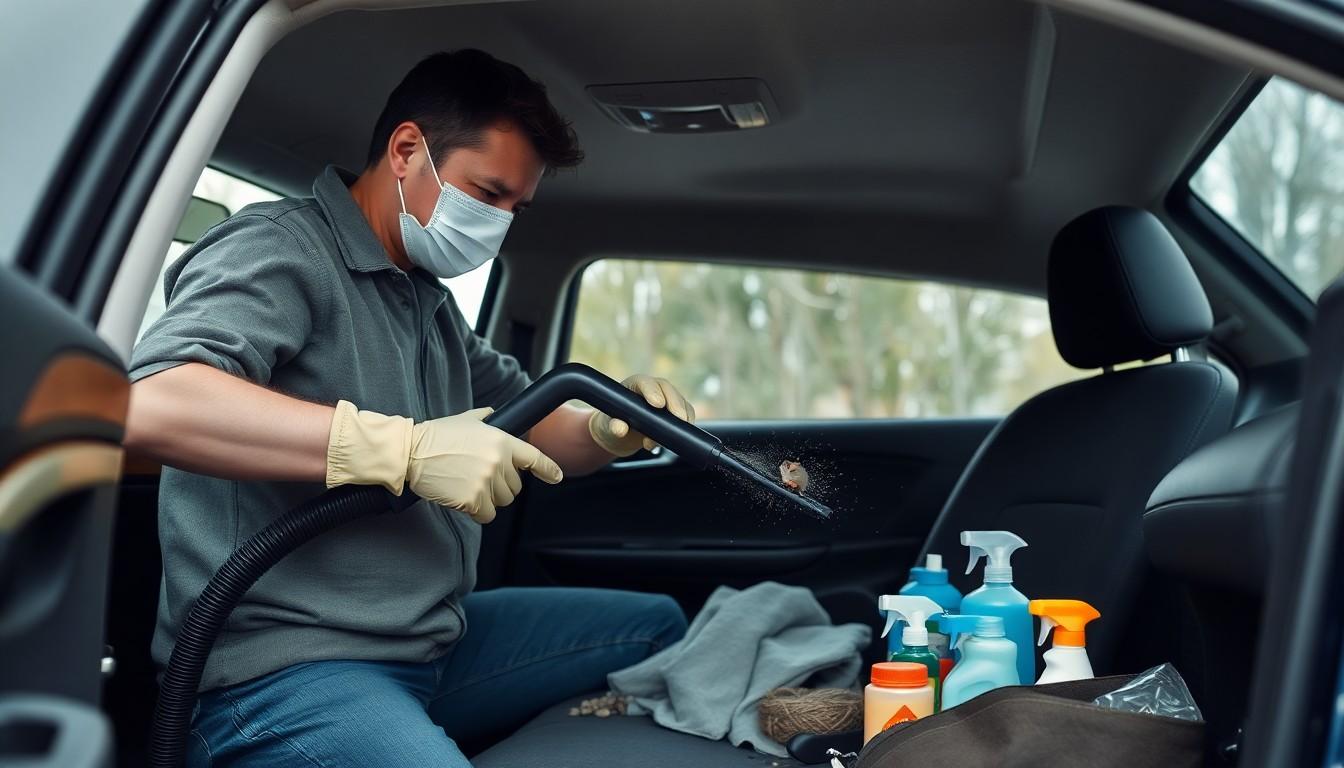
After successfully removing mice from your vehicle, thorough cleaning is essential to eliminate health hazards and odors. Mice leave behind droppings, urine, and nesting materials that can cause diseases and persistent smells if not properly addressed.
Remove Debris and Nesting Materials
Start by vacuuming all areas of your car thoroughly, paying special attention to places where mice typically nest. Clear out any droppings, shredded materials, and debris from the engine bay, under seats, and in storage compartments. Consider using a shop vacuum with a HEPA filter to capture fine particles and prevent the spread of contaminants. Remove floor mats and clean them separately to ensure no nesting materials remain hidden.
Clean Ventilation Ducts
Mice often crawl into ventilation systems, leaving behind contaminants that can affect air quality. Fog the air conditioning ventilation ducts with a specialized cleaner designed for automotive use. This process eliminates any remnants of mouse activity and prevents unpleasant odors from circulating through your vehicle. Turn on the ventilation system after cleaning to help distribute the sanitizing agent throughout all ducts.
Sanitizing the Interior
Proper sanitization is crucial for eliminating potentially harmful pathogens mice leave behind. Mice can transmit various diseases through their droppings and urine, making this step particularly important for your health.
Spray all hard surfaces with a car-safe disinfectant, focusing on areas where mouse activity was noticed. Wipe down the dashboard, console, door panels, and steering wheel thoroughly. Clean fabric surfaces like seats and carpets with appropriate upholstery cleaners that disinfect without damaging materials.
Keep your car well-ventilated during and after the cleaning process by opening all doors and windows. Fresh air circulation helps remove cleaning fumes and any lingering mouse odors from your vehicle’s interior.
Repairing Mouse Damage
Mice can cause important damage to your vehicle that extends beyond just cleanliness issues. Their tendency to chew on materials can lead to costly repairs if not addressed promptly.
Conduct a thorough inspection of all electrical wiring in your car, as mice commonly chew through these components. Check ignition systems, windshield wiper mechanisms, and other accessible wiring for signs of damage. Frayed or broken wires require immediate repair to prevent electrical malfunctions or potential fire hazards.
Examine upholstery, insulation, and other soft materials for damage from nesting or chewing. Replace any compromised materials to prevent further deterioration and eliminate remaining scent markers that might attract new mice. For extensive damage in hard-to-reach areas, professional automotive detailing services might be necessary to ensure all affected components are properly repaired or replaced.
Preventing Future Mouse Infestations

After successfully removing mice from your car, taking preventive measures is essential to avoid future infestations. These strategies create an unwelcoming environment for rodents and protect your vehicle from recurring problems.
Regular Maintenance Tips
Regular maintenance forms the foundation of effective mouse prevention. Clean your car’s interior thoroughly at least once a week, removing all food crumbs, wrappers, and trash that might attract mice. Vacuum seats, floors, and hard-to-reach areas where food particles often accumulate. Pay special attention to the engine bay during routine maintenance checks, removing any debris, leaves, or nesting materials that could provide shelter for mice. Cars left unused for extended periods are particularly vulnerable to infestations, so start and drive your vehicle regularly to discourage mice from settling in. Consider using sealed plastic containers for any items stored in your car rather than paper or cardboard boxes that mice can easily chew through.
Mouse-Proofing Your Parking Area
The environment where you park significantly impacts your risk of mouse infestations. Keep your garage or carport clean and free of clutter, eliminating potential hiding spots and nesting materials for mice. Store bird seed, pet food, and other potential food sources in sealed metal containers that rodents can’t chew through. Create a natural barrier around your parking area by trimming vegetation and maintaining at least a 2-foot gap between plants and your car’s usual parking spot. Apply commercial mouse repellents around the perimeter of your parking space, refreshing them every 30-60 days as recommended on the packaging. Motion-activated lights can also deter nocturnal rodents from approaching your vehicle, making your parking area less attractive to mice seeking shelter.
When to Seek Professional Help
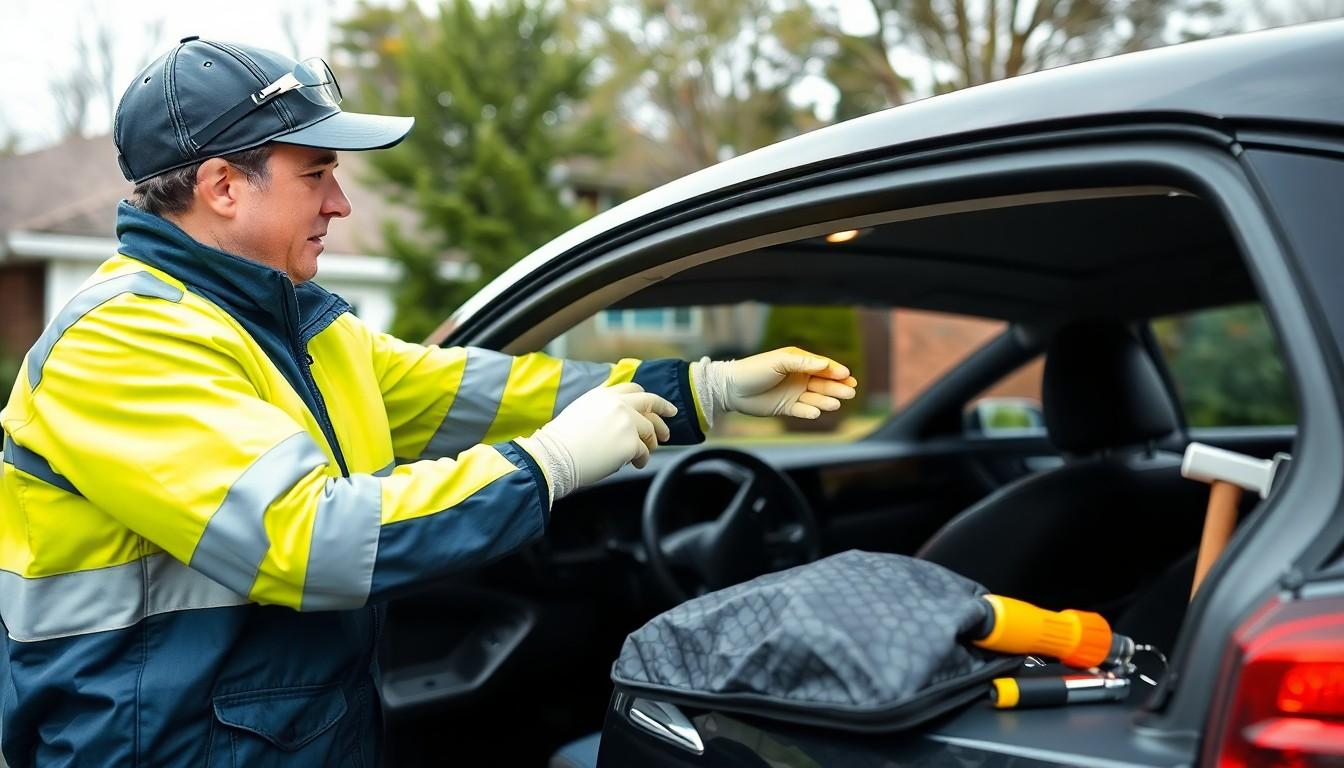
While DIY methods often work for mouse removal, certain situations require expert intervention. Professional pest control services have specialized equipment and knowledge to handle complex infestations safely and effectively.
Severe Infestations
Severe mouse infestations in your vehicle demand immediate professional attention. Multiple mice living in your car create extensive nesting materials and leave behind many droppings throughout the interior. You’ll notice persistent odors that remain even after cleaning and possibly observe mice activity during daylight hours. Professionals use commercial-grade traps and deterrents to eliminate large populations efficiently. They also identify hidden nesting areas in hard-to-reach places like behind dashboards or within door panels that DIY methods might miss.
Electrical Damage Concerns
Mice frequently chew through electrical wiring in vehicles, creating hazardous conditions that require expert assessment. Damaged wires can affect critical systems including your car’s ignition, windshield wipers, and dashboard controls. Warning signs include intermittent electrical failures, strange burning smells, or unexplained check engine lights. Professional mechanics or automotive electricians can inspect your entire electrical system for rodent damage, safely repair chewed wires, and apply rodent-deterrent tape to prevent future damage. These specialists also check for less obvious damage to fuel lines, brake lines, and other crucial components that mice commonly target.
Conclusion
Dealing with a mouse in your car doesn’t have to be overwhelming. By acting quickly when you spot the signs and using the humane removal methods we’ve outlined you can reclaim your vehicle and prevent future infestations.
Remember that consistency is key to long-term success. Regular cleaning maintenance and proactive prevention will keep mice from viewing your car as a potential home. For severe cases don’t hesitate to call professionals who can handle complex situations and repair any damage.
With these strategies you’ll be back to enjoying a mouse-free driving experience in no time while protecting your vehicle’s value and your health along the way.
Frequently Asked Questions
How do I know if I have mice in my car?
Look for droppings, strange odors, shredded materials (like insulation or upholstery), and nocturnal sounds. You might also notice chewed wires or nesting materials in your engine compartment or under seats. Catching these signs early can prevent extensive damage to your vehicle.
Can mice cause serious damage to my car?
Absolutely. Mice can chew through electrical wiring, causing system failures that lead to expensive repairs. They also damage upholstery, contaminate air filters, harm engine components, and create HVAC issues. Beyond property damage, their droppings and urine pose health hazards by potentially carrying diseases.
Why are mice attracted to my car?
Cars provide warmth (especially in the engine compartment), shelter, and protection from predators. Vehicles parked for extended periods are particularly vulnerable. Mice are also drawn to food remnants like crumbs under seats or in cup holders. They can squeeze through incredibly tiny openings to access your vehicle.
What’s the best way to humanely remove mice from my car?
Live traps baited with peanut butter or seeds are most effective for humane removal. Once caught, release mice at least 100 yards away to prevent return. Natural deterrents like peppermint oil, clove oil, or cayenne pepper can help repel mice without harming your car’s interior or electrical systems.
How do I clean my car after removing mice?
First, remove all nesting materials and debris while wearing protective gloves and a mask. Clean ventilation ducts thoroughly, vacuum every surface, and sanitize the interior with appropriate disinfectants that eliminate disease-causing agents. Check for and repair any damage to wiring or upholstery.
How can I prevent mice from getting into my car again?
Regularly clean your car’s interior and engine bay to remove food sources. Store items in sealed containers and park in clean areas away from trash. Use commercial mouse repellents or natural deterrents like peppermint oil. Consider sealing small entry points and installing motion-activated lights in your parking area.
When should I call a professional for mice in my car?
Seek professional help if you have a severe infestation that DIY methods haven’t resolved, if you suspect electrical damage that might affect vehicle safety, or if you’re uncomfortable handling the situation yourself. Professionals have specialized equipment and expertise to safely eliminate rodents and assess damage.
Do ultrasonic repellent devices really work for cars?
Ultrasonic devices emit high-frequency sounds intended to deter rodents. Their effectiveness varies, with some users reporting success while others see limited results. They’re generally safe for vehicles but may lose effectiveness over time as mice become accustomed to the sound. Consider them one tool in a comprehensive prevention strategy.

